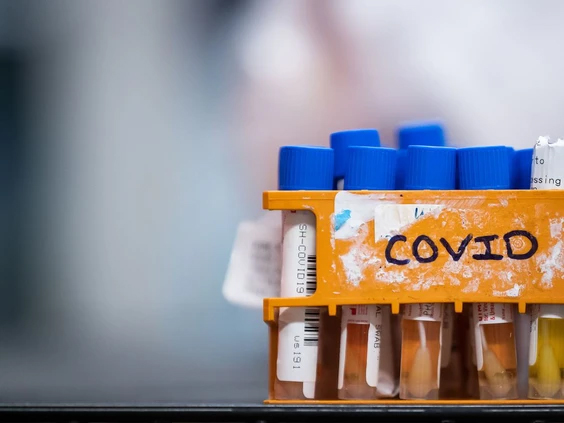Researchers found nearly 30% of Canadian adults were infected during the first Omicron wave compared with roughly 10% who had been infected in the previous four COVID waves

TORONTO — The number of Canadian adults infected with COVID-19 tripled during the fifth wave of the pandemic compared with the total number of adults infected in the previous four waves, according to a new study led by Toronto researchers.
More than 5,000 Canadian adults — members of the Angus Reid Forum, a public polling cohort — participated in the fourth phase of the Action to Beat Coronavirus (Ab-C) study. The findings of the study were published as a letter to the editor in The New England Journal of Medicine Wednesday.
The adult participants took a self-administered dried blood spot test between Jan. 15 and March 15, 2022 and sent the blood samples back to the researchers for analysis. The research team then tested the samples for antibodies related to COVID-19.
From those results, the researchers found nearly 30 per cent of Canadian adults were infected during the first Omicron wave of infections compared with roughly 10 per cent who had been infected in the previous four waves.
Of those fifth wave infections, one million were among the country’s 2.3 million unvaccinated adult population — representing 40 per cent of all unvaccinated adults, the study notes.
Patrick Brown, a lead author of the Ab-C study and biostatistician at the Centre for Global Health Research at St. Michael’s Hospital, said the study is meant to portray a “complete and representative picture” of COVID-19 in the country in the absence of widespread PCR testing and COVID-19 data tracking.
“This is quite important for us to be able to understand COVID in the population,” he said in a phone interview Wednesday.
“The testing data is incomplete and we’ve essentially stopped PCR testing for the most part in Canada, or in Ontario, at least, so having a representative sample of people who receive these test kits is very important to figure out how much COVID there has been and how much immunity we have in the population.”
The study also found that antibody levels were much lower amongst adults with only two doses of a COVID-19 vaccine compared to those with three doses, meaning those with three doses had stronger immunity in the face of the virus.
And amongst the unvaccinated population — including those who had a COVID-19 infection — their antibody levels were “quite” lower than people with three doses of the vaccine, Brown noted.
“(In) Canada, we had quite a bit less COVID-19 than some other countries, especially the U.S. We have less natural protection and we’re really relying on vaccines in Canada to build up immunity in our population,” he said.
“Certainly three doses plus an infection was the maximum protection, but three doses of vaccine certainly gave a very good amount of protection — a big improvement over two doses alone.”
The Ab-C study is a collaboration between Unity Health Toronto, the University of Toronto’s Dalla Lana School of Public Health, the Angus Reid Institute and the Lunenfeld-Tanenbaum Research Institute at Sinai Health. It’s funded by the federal government through its COVID-19 Immunity Task Force.
The team of researchers has been tracking the pandemic in Canada with periodic polling about lived experience and blood sample collection since May 2020.
Brown said the next phase of the study is already being conducted. The team has started surveying roughly 1,300 Canadian adults who were not infected by the initial Omicron variant known as BA.1 to determine whether they were infected by the Omicron subvariant called BA.2 from March to June 2022.
“We are preparing test kits now to send out our panel of people we’ve come back to several times, and this will be the fifth round of tests we’re sending them to better understand the second wave of Omicron,” he said.
“We found that the number of cases reported by public health isn’t as high as the previous wave, the number of hospitalizations hasn’t risen very much, but there has been a lot of infection … so we’re expecting to see that there’s been quite a lot of COVID throughout the population.”
Article From: National Post

